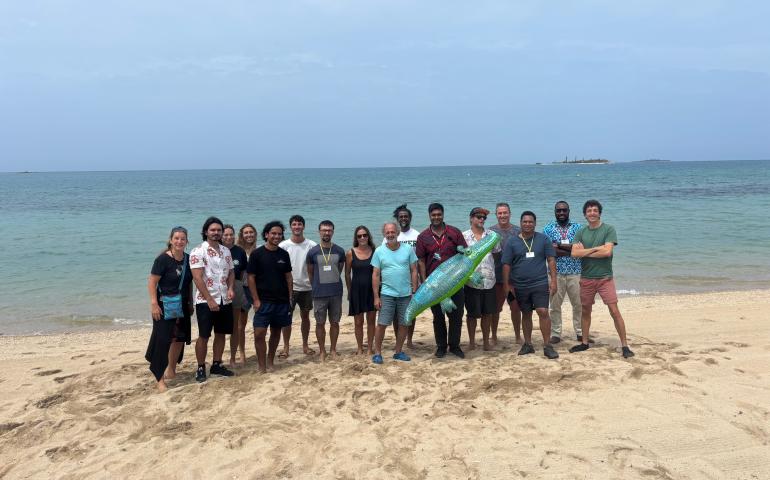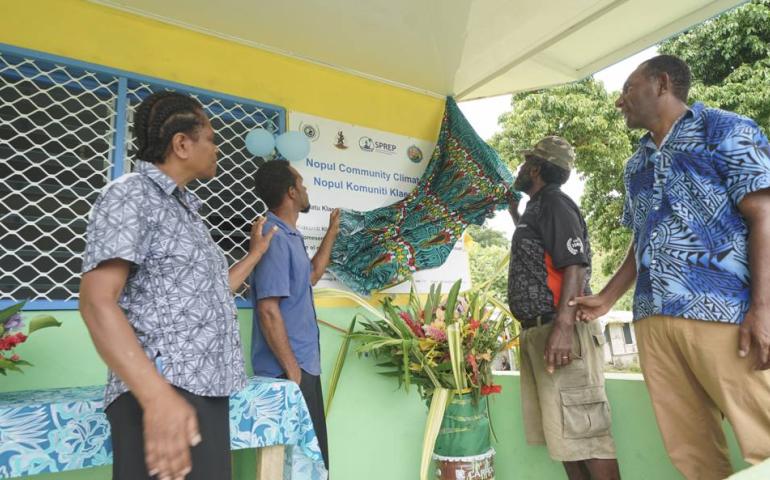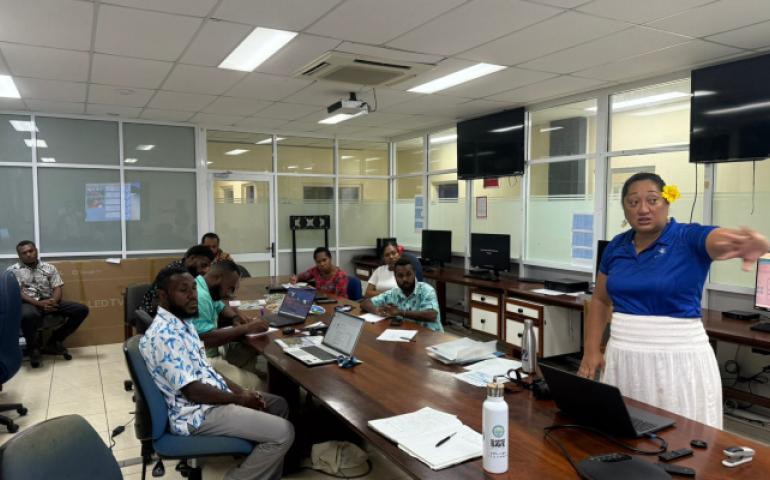Robust science critical in Climate Change projects in the region: GCF
By Pita Ligaiula of Pacific Island News Association (PINA)
17 August, 2017, Honiara, Solomon Islands, PMC-4 – ‘Robust science’ is critical in accessing Green Climate Fund (GCF) for the Pacific region.
That’s the word from Joseph Intsiful, GCF Climate Information and Early Warning Specialist Division of Mitigation and Adaptation in an interview in Honiara at the margins of the Pacific Meteorological Council (PMC) meeting this week.
“The science is very fundamental. The basis of all negotiation about climate change is science, so without robust scientific basis we cannot design a project to address climate change.
“You may develop solution that supports the programmes, so the scientific basis is critical, you need to understand the baseline into the future and how the risk evolves over time. That’s why science is formed in how the projects are designed and part of this meeting is moving towards those directions. Robust science will form the design of the projects,” said Intsiful.
Concerns have been raised in the past by regional governments about the difficulty of accessing financial support for climate change projects in the Pacific region. On this, Instiful said the GCF do a lot of due diligence.
“I think it’s getting better. There is a new process and structures are a bit different because the GCF is designed to address specific issues. This is different from development. This is climate change and the requirements are different.
“Things need to be done away from the business as usual which needs to be transformational and must have an impact potential that can be realised.
“So the processes are bit tight, we do a lot of due diligence and take a lot of risk. This is the uniqueness of GCF in trying to bring a paradigm shift and bring your resolution that attracts the programme,” he explained.
For many countries in the Pacific, climate change is becoming a challenge as the frequencies of weather anomalies and climatic extremes have increased over the last two decades.
The GCF official praised the PMC inaugural dialogue held with donor partners on Thursday.
“Having a meeting like this is where you have a broader constituent discussing issues that are critical to the support we provide to the region is very important. Also the PMC has the convenient power to bring together not only the meteorologists but other sectors that depends on meteorology for development is very important.
“It allows us also to help the countries and the region to articulate properly the problems and the issues and work together to get the solution,” added Intsiful.
Today, Ministers responsible for meteorology in the Pacific will convene their one-day ministerial to endorse the outcome of the PMC meeting resolution this week. – #PMC4 #PacificMet
The Fourth Pacific Meteorological Council is being held in Honiara, Solomon Islands from the 14 – 17 August co-hosted by the government of Solomon Islands, the Secretariat of the Pacific Regional Environment Programme (SPREP) and World Meteorological Organization (WMO). This will followed by the Second Pacific Meteorological Ministers Meeting (PMMM) on the 18 of August.
The PMC and PMMM is supported by the Government of Solomon Islands, SPREP, WMO, Government of Australia through the Climate and Oceans Support Programme (COSPPac) and Pacific Australia Climate Change Science and Adaptation Planning Programme (PACCSAP), Government of Finland, National Ocean and Atmospheric Administration (NOAA), United Nations Development Programme through the Resilience in the Pacific (SIDS) project.
The PMC consists of members of the Pacific National Meteorological and Hydrological Services supported by its technical partners, regional organisations, non-government organisations and private sectors.
This article was developed by a Pacific Media Team of Reporters currently providing coverage on the Fourth Pacific Meteorological Council in Solomon Islands. This activity coordinated by SPREP is supported by a partnership between the Government of Solomon Islands, SPREP, Australia funded project (Climate and Oceans Support Program (COSPPac) and UNDP Disaster for Pacific SIDS (RESPAC) project.
The views and opinions expressed in this article are those of the writer and do not necessarily reflect the views of the Secretariat of the Pacific Regional Environment Programme (SPREP) or the United Nations Development Programme (UNDP)both of which provided funding for generating media articles.
- Log in to post comments



